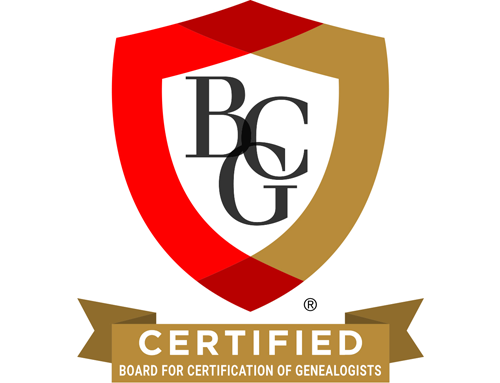SpringBoard, an official blogger for the 2017 National Genealogical Society (NGS) Family History Conference, is pleased to offer a review of this BCG Skillbuilding lecture, presented 12 May 2017.
F351, Thomas Wright Jones, PhD, CG®, CGL℠, FASG, FNGS, FUGA “Converting a Bunch of Information into a Credible Conclusion”
By Mary O’Brien Vidlak, CG®
Many genealogists are good at collecting “bunches of information” to answer a research question but then struggle to organize and assemble the material to know whether or not a feasible conclusion has been reached. Tom Jones’s BCG Skillbuilding lecture “Converting a Bunch of Information into a Credible Conclusion” focuses on a strategy to assemble this collected information to understand whether you have a viable conclusion or not. If you have a conclusion, you will then be able to see what that conclusion is.
The presentation introduced the term assemblage, which is defined as “a grouping of evidence items giving tentative answers to a genealogical research question.” Although this is a new word in the genealogical world, it describes something genealogists have been doing for decades.
Assemblages can be either evidence based or event based. Tom shared examples of both kinds of assemblages. The first example of an evidence based assemblage used eighteen sources spanning eight years to answer the question of when a man was born. He then demonstrated how resolution of this birthdate question and the same sources were used in an event based assemblage to resolve an identity question for the same individual.
Tom discussed the three types of evidence assemblage formats: a mental assemblage, text or graphically arranged writing, and a documented graphic. He used various examples to show when each is desirable, and how they can be put together to solve complex cases.
In addition to revealing whether or not you have a conclusion, assemblages can also uncover conflicts in evidence; can expose strengths and weaknesses in conclusions; and may provide ideas for further research.
Tom concluded his lecture on a cautionary note. He reminded his audience to be careful about assembling evidence as soon as it is collected. A conclusion reached from the assemblage before the research is complete can lead to bias.
Assemblage is essential to ensuring work meets the Genealogical Proof Standard. It must meet the standard of reasonably exhaustive research to be complete. The concept of putting evidence into an assemblage corresponds to the correlation part of the GPS. Finally, the fifth step of the GPS—a soundly reasoned, coherently written conclusion—cannot be reached without assembling the collected evidence in some way.
Information on purchasing this lecture can be found at Playback Now www.playbackngs.com.
The words Certified Genealogist are a registered certification mark, and the designations CG, CGL, and Certified Genealogical Lecturer are service marks of the Board for Certification of Genealogists®, used under license by board certificants after periodic evaluation.

